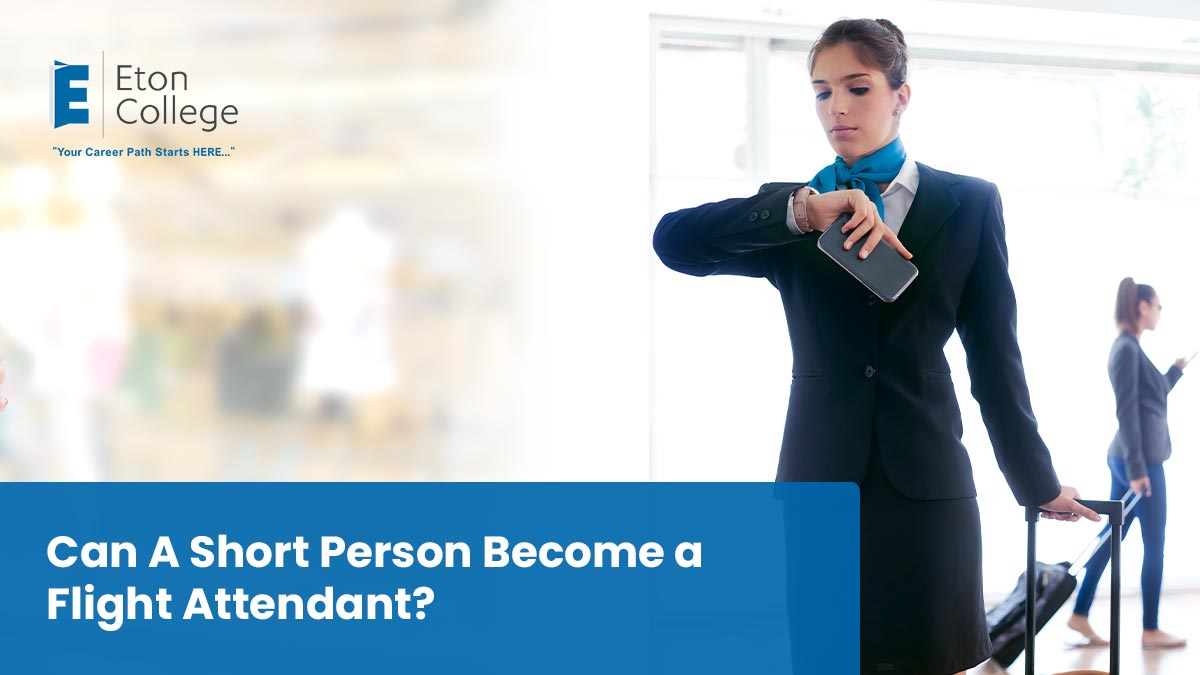- Height requirements for flight attendants are in place primarily for safety reasons, not appearance.
- Most airlines focus on a reach test to ensure flight attendants can access safety equipment in overhead compartments.
- Some airlines are more lenient, offering opportunities for shorter candidates to become flight attendants.
- Strong customer service skills and hospitality experience can help candidates stand out, even if they don’t meet typical height requirements.
- Enrolling in a flight attendant course, like Eton College’s Flight Attendant Preparation Program, can help you prepare for recruitment and overcome physical challenges.
Embarking on a career as a flight attendant comes with its own set of unique requirements, but for those who don’t meet the typical height standards, the path may seem even more daunting. While height is often associated with the ability to become a flight attendant, it’s not just about physical appearance—it’s about ensuring safety and accessibility for both the crew and passengers.
So, the question remains: can someone who is shorter than the standard still take to the skies as a flight attendant?
Let’s explore how height factors into this career and what options are available for aspiring flight attendants who may not meet the typical height criteria.
Why Are Height Requirements Important?
Height requirements for flight attendants are not based on aesthetics or superficial preferences; they are rooted in the safety and functionality of the job. While flight attendants are known for their customer service, a significant part of their role involves ensuring the safety and security of passengers and the crew.
To become a flight attendant, you need to perform safety checks, respond to emergencies, and access equipment stored in overhead compartments, all of which depend on your ability to reach these areas.
Airlines require their cabin crew to meet certain height standards to ensure they can access safety equipment and overhead compartments without assistance. These compartments typically house essential emergency tools such as oxygen tanks, fire extinguishers, medical kits, and survival gear. In an emergency, flight attendants must act quickly, and being unable to reach these items could waste valuable time. Therefore, height is directly linked to one’s ability to become a flight attendant and carry out these duties efficiently.
The Reach Test: A Key Part of the Hiring Process
To ensure height standards are met, most airlines conduct a “reach test” as part of their recruitment process. This test assesses whether a candidate can reach the overhead compartments without assistance. The reach test ensures that anyone who wants to become a flight attendant can reach the required height marker while barefoot and sometimes on tiptoes.
The reach test is often more important than overall height measurements, meaning that even shorter candidates who can meet the reach standards may still have the opportunity to become a flight attendant. The test is essential for determining whether a person is physically capable of performing their safety duties on board.
Typical Height Requirements for Airlines
Height requirements for those who want to become a flight attendant vary from airline to airline, but they generally range from 5 feet 2 inches (157 cm) to 6 feet 2 inches (188 cm). These limits ensure that flight attendants can both access overhead compartments and move comfortably within the confined space of the cabin. However, some airlines focus more on the reach test rather than specific height, allowing shorter individuals who can still reach the required marker to succeed.
For example, airlines like Emirates, Qatar Airways, and British Airways usually have a minimum reach requirement of 212 cm (about 6 feet 11 inches) while standing on tiptoes. This requirement ensures that even shorter candidates who aspire to become a flight attendant can pass the test if they have sufficient arm reach.
How Short Individuals Can Still Pursue a Career as a Flight Attendant
While height requirements can be challenging for shorter individuals, it doesn’t mean that becoming a flight attendant is impossible. Here are some ways shorter candidates can improve their chances of success:
- Focus on Reach, Not Height: As many airlines prioritize reach ability over height, shorter individuals should work on improving their arm reach and flexibility. Practicing the reach test can increase your chances to become a flight attendant.
- Look for Airlines with More Flexible Height Standards: Some airlines have more relaxed height requirements, making it easier for shorter individuals to meet the standards and become a flight attendant.
- Highlight Other Strengths: Airlines also look for excellent customer service skills, language proficiency, and prior hospitality experience. Emphasizing these strengths can increase your chances of being hired, even if you’re shorter.
- Consider Other Roles in Aviation: If height remains an obstacle to becoming a flight attendant, consider other aviation roles, such as ground service staff, ticket agents, or customer service representatives, which don’t have the same height requirements.
Should You Still Pursue Your Dream?
While height requirements for flight attendants exist for safety reasons, shorter individuals can still pursue this career by focusing on meeting reach standards rather than specific height measurements. With the right determination, flexibility, and targeted training, becoming a flight attendant is achievable even for those who may not meet traditional height requirements.
Eton College offers a comprehensive Flight Attendant Preparation Program that provides aspiring flight attendants with essential training in safety procedures, customer service, and emergency response. With the right preparation, even shorter individuals can become a flight attendant and build a successful career, overcoming any height-related challenges.




